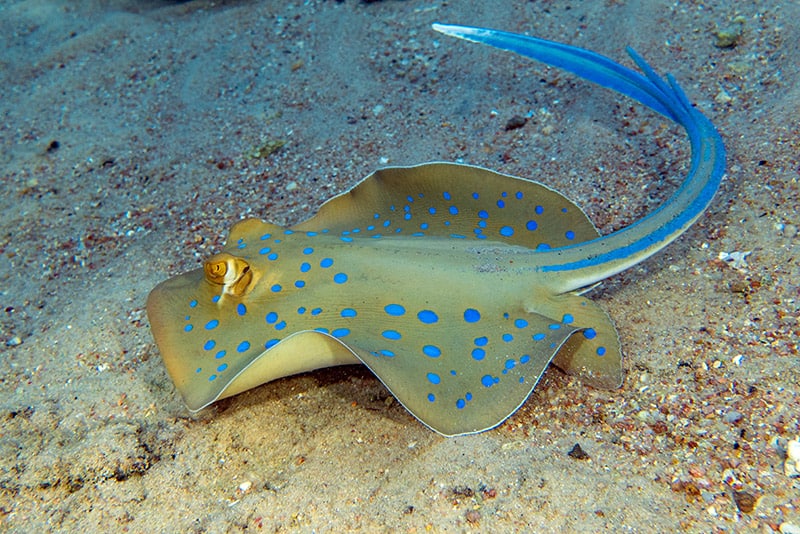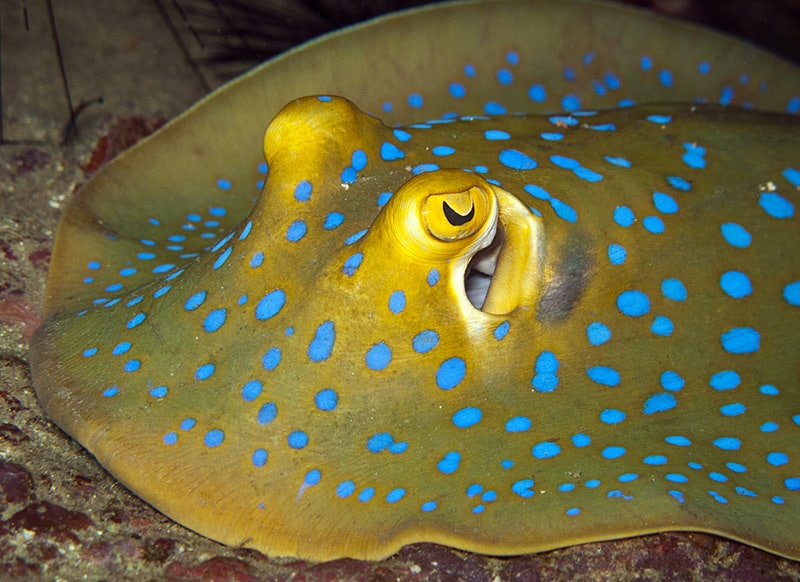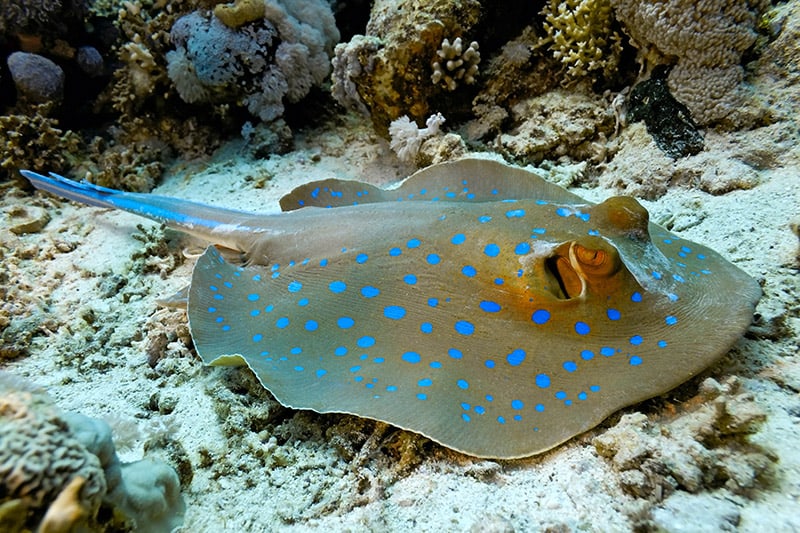The Blue Spotted Stingray or Blue-spotted Ribbontail Ray are one ot the most unusual marine animals available. They have two plates in their mouth which are used for crushing the shells of crabs, prawns, and molluscs.
This ray would take squid and shrimp from our hands so you could feel the plates in the mouth. For the first few feedings we impaled food on a long pole and placed it very near the mouth to entice the ray to eat. Once they get the idea they eat almost anything.
The spots on the Blue Spotted Stingray or Blue-spotted Ribbontail Ray are usually blue or light brown. The tail is slightly longer than the body and has a spine, the stinger, about halfway down the tail.
- NOTE: Be very careful when handling these animals as a sting can be extremely painful. If you do get stung immediately soak it in hot water and call a doctor!
- For more information on keeping marine fish see: Guide to a Happy, Healthy Marine Aquarium
Scientific Classification
| Kingdom: | Animalia |
| Phylum: | Actiniform |
| Class: | Elasmobranchii |
| Order: | Rajiformes |
| Family: | Dasyatidae |
| Genus: | Taeniura |
| Species: | lymma |
Maintenance difficulty
The Blue Spotted Stingray or Blue-spotted Ribbontail Ray is fairly easy to keep once it is feeding on it’s own.

Maintenance
Feed all kinds of large meaty foods like small pieces of fish, squid, shrimp, crabs, prawns, molluscs, and live goldfish. Best to feed small amounts several times a day. Water in the aquarium should not be from the tap due to trace amounts of copper and other contaminants. It is best to use reverse osmosis or deionized.
Habitat: Natural geographic location
Blue Spotted Stingray or Blue-spotted Ribbontail Ray are found from East Africa to the Western Pacific. Often seen on the Great Barrier Reef resting on sandy bottoms of caves or under ledges.
Foods
In the wild they feed on crabs, prawns, worms, molluscs, and fishes.
Social Behaviors
Gets along with its own kind and other fish. Watch smaller fish as they could become lunch although they usually leave other fish alone unless they are acting sick or distressed.
Sexual differences
Recommended light levels
Breeding/Reproduction

Temperature
Length/Diameter of fish
Blue Spotted Stingray or Blue-spotted Ribbontail Ray adults can grow to 25 cm (10 inches) not including the tail.
Minimum Tank Length/Size
A minimum 75 gallon aquarium is recommended.
Water Movement: Weak, Moderate, Strong
Water Region: Top, Middle, Bottom
Usually found on the bottom, sifting through the sand. Will sometimes bury itself in the sand.
Availability
This fish is available from time to time.
- Beginner Fish – Saltwater fish for beginners
- Community Fish – Peaceful Saltwater fish
- Hardy Fish – Hardy Saltwater fish
Featured Image Credit: Krzysztof Odziomek, Shutterstock
